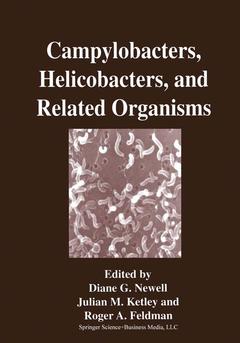Description
Campylobacters, Helicobacters, and Related Organisms, 1996
Coordinators: Newell Diane G., Ketley Julian M., Feldman Roger A.
Language: English
Subjects for Campylobacters, Helicobacters, and Related Organisms:
Publication date: 07-2013
768 p. · 17.8x25.4 cm · Paperback
768 p. · 17.8x25.4 cm · Paperback
Description
/li>Contents
/li>
By 1977 it was clear that the thermophilic campylobacters were a major cause of acute bacterial enteritis. In response to that observation an international workshop was convened in Reading, England, and attracted over 130 participants. Many of these individuals resolutely returned for the eighth in the series of biennial international workshops, this time held in Win chester, England, in July 1995. All were surprised at the continued, and even expanding, re search effort in this narrow microbiological field. Such a lasting interest is undoubtedly a reflection of a consistent rise in the incidence of infection, the growing number of closely re lated organisms and disease associations, and an ever-increasing awareness by the public and government agencies of public health and food safety issues. The second workshop in Brussels in 1983 was a forum that demonstrated the growing awareness in the campylobacter community of the existence of campylobacter-like organisms and provided the platform for presentations describing the association of these organisms, now classified in the genus Helicobacter. with gastroduodenal disease. The clinical aspects of the research into helicobacters is now thoroughly covered in several other meetings, and the remit of the international workshop has been expanded to provide a forum for the presentation of the basic microbiological research carried out on these bacteria. In a continuation of this ap proach the remit of the workshop has been further extended to other related organisms, reflect ing that there are many other campylobacter-like organisms still to identify and characterize.
Workshop A1: Detection and Culture. Workshop A2: Epidemiology, Clinical Aspects and Treatment of Helicobacters. Workshop A3: Genetics Methods. Workshop B1: Pathogenic Mechanisms of Campylobacters Workshop B3: Epidemiology of Campylobacters. Workshop C2: Immunology and Vaccines of Helicobacters. Workshop C3: Poultry Infections and Their Control. Workshop D1: Clinical Aspects of Campylobacters. Workshop E1: Veterinary Infections. Workshop E3: Detection of Campylobacters in Foods and the Environment. Workshop F3: Antimicrobial Resistance. Workshop G1: Immunology and Vaccine of Campylobacters. Workshop G2: New and Emerging Pathogens. Workshop G3: Speciation and Subtyping. Indexes.
© 2024 LAVOISIER S.A.S.




